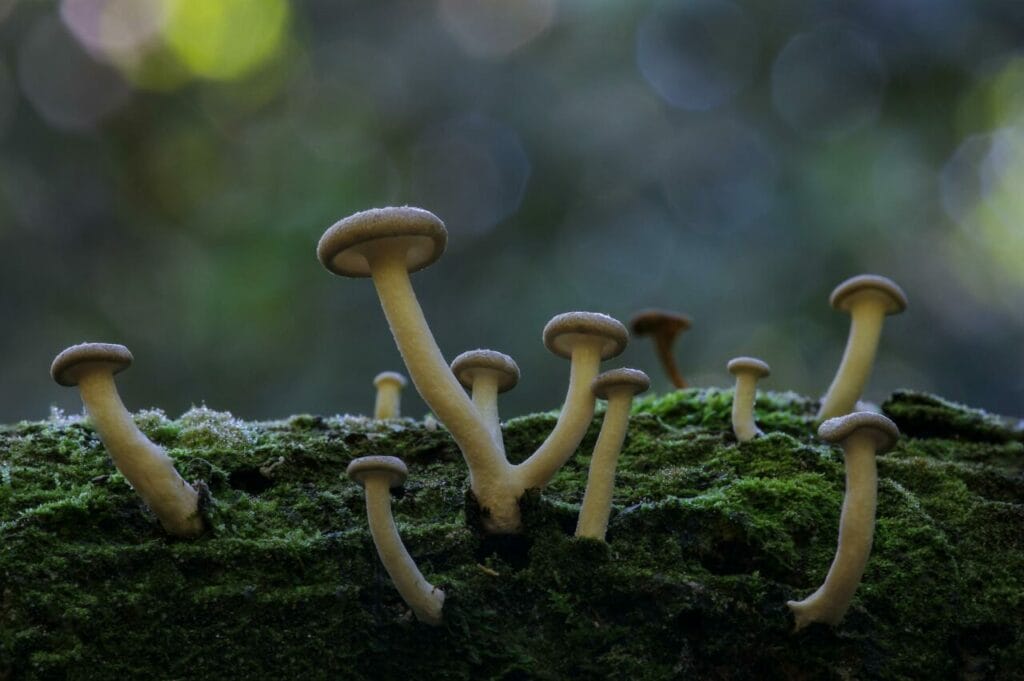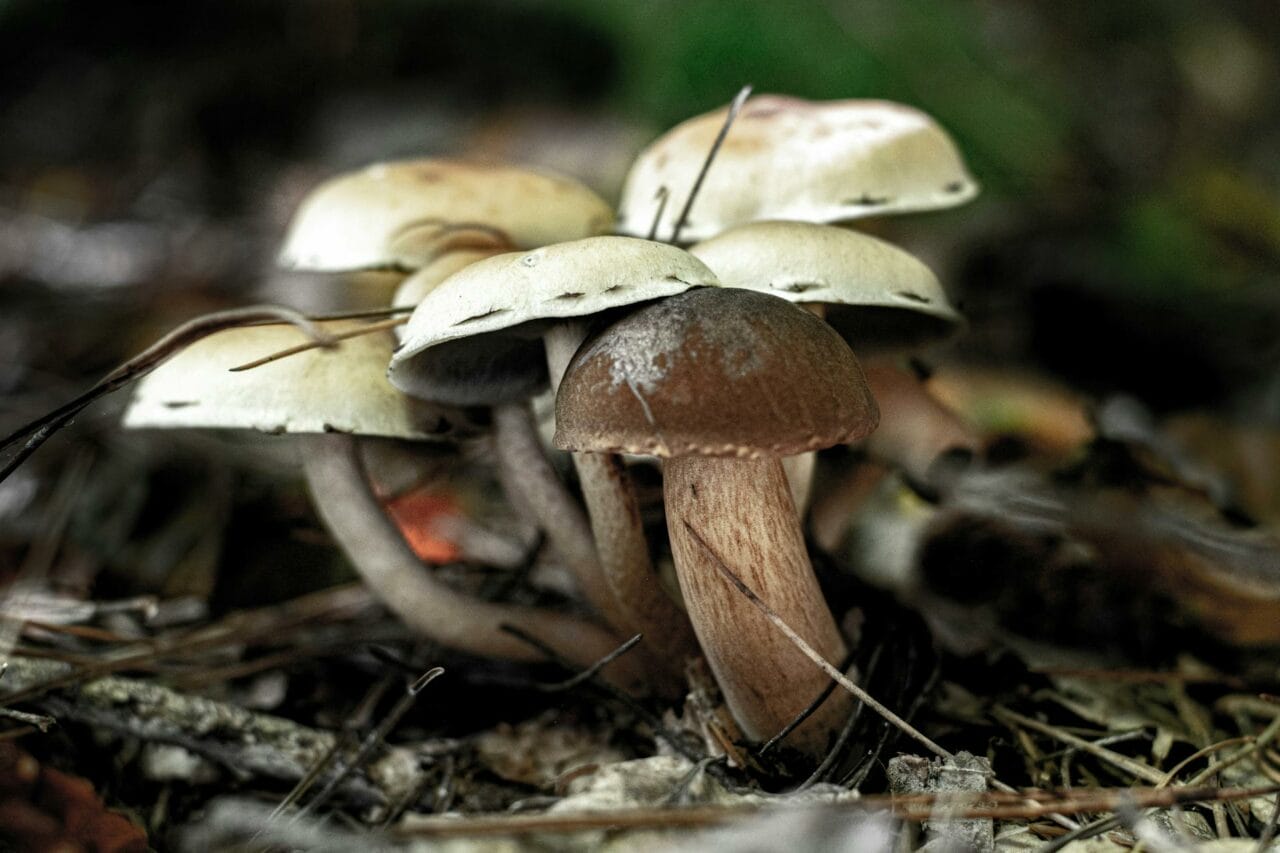Psilocybin mushrooms have been used for centuries for their hallucinogenic properties and potential therapeutic benefits. Among the various psilocybin-containing mushroom species are Brazilian Magic Mushrooms and Costa Rican Psilocybe cubensis.
Read on to explore the differences between each psilocybin mushroom, including potency, effects, cultivation, and cultural significance. This will help you decide which strain is right for you.

Table of Contents
Overview of Brazilian and Costa Rican Shrooms
| Aspect | Brazilian Magic Mushrooms | Costa Rican Psilocybe Cubensis |
| Origin | Hail from Brazil and neighbouring South American countries. | Found in Central America, particularly in Costa Rica. |
| Potency & Psilocybin Content | Renowned for potent trips. Estimated concentrations around 1.1% to 1.5% of total tryptamines. | Praised for potent and consistent psychedelic effects. Estimated doses range from 0.1 to 0.5 grams for microdosing and 2 to 3.5 grams for full psychedelic trips. |
| Effects | Effects vary based on factors like body weight, dosage, and metabolism. | Effects include enhanced mood, creativity, and focus at lower doses. Moderate doses bring visual and auditory distortions, reflective insights, and emotional sensitivity. Higher doses induce vivid hallucinations and philosophical insights. |
| Cultivation | Fast-growing strain which is suitable for home growers. Requires constant humidification during growth. Thrives in nutrient-rich, dung-enriched soils. | Thrives in moist, humid, subtropical environments. Commonly found in cow pastures and grazing lands. Adaptable to various climates. |
Brazilian Magic Mushrooms
This shroom strain originated from Brazil and neighbouring South American countries. They were originally collected from the Brazilian highlands and were cultured in a lab to ensure genetic stability.
Brazilian magic mushroom is versatile and suitable for microdosing, recreational, and medical use, making it adaptable to various occasions and settings.
Appearance
- The strain can be identified by its larger veil, which connects the cap to the stem.
- They are physically distinct, with long, thin stems and broad golden caps (reaching up to 18 cm in diameter). When handled, the stems turn blue due to the oxidation of psilocybin, adding to their visual allure.
Potency and Psilocybin Content
The Brazilian strain is renowned for its potent trips, kicking in within 30 minutes of consumption. Expect excitement, euphoria, and vivid visual stimulation. However, determining its exact potency has been challenging due to a lack of scientific consensus.
A close relative, the SYZYGY strain, tested at 1.48% psilocybin and 0.37% psilocin content, making it one of the most potent mushrooms. While the Brazilian strain wasn’t tested, it’s estimated to be similar in strength, with concentrations around 1.1% to 1.5% total tryptamines.
Benefits and Effects
- Research suggests that magic mushrooms, including Brazilian Psilocybe Cubensis, treat mental health disorders such as anxiety, depression, and PTSD. Additionally, they show promise in addressing substance abuse issues.
- The effects of Brazilian magic mushrooms vary. Novice users can expect a mental buzz, mild disorientation, and enhanced colour perception. Higher doses may induce euphoria, heightened creativity, and profound reflective thoughts.
- Effects can last 5 to 6 hours but vary depending on dosage and individual metabolism.
Cultivation
Brazilian Psilocybe Cubensis mushrooms grow exceptionally fast, which makes them ideal for home growers. They exhibit strong growth and disease resistance and can grow to impressive sizes.
One common issue growers face is not providing enough moisture. These mushrooms require constant humidification as they grow, so investing in a high-quality mister or automatic humidifier is recommended when cultivating the Brazilian cubensis strain or other South American strains.
Costa Rican Psilocybe Cubensis
Costa Rican Cubensis is a potent strain of Psilocybe cubensis found in Central America, particularly Costa Rica. It has been used historically, possibly in spiritual ceremonies. Its cultural significance and psychoactive properties make it highly valued in mycological and psychedelic communities.
Appearance
- The cap is usually golden brown to light tan. It starts convex with a slight elevation in the center and flattens out as it matures. It ranges from 2 cm to 8 cm in diameter and often shows bluish bruising, indicating the presence of psilocin.
- The stem is usually 4-15 cm long and 1-2 cm in diameter, white or cream-coloured, turning bluish near the base if handled or damaged.
- A dark purple-brown spore print is a definitive feature of this mushroom, confirming its identity and potentially useful for cultivation under appropriate conditions.
- Gills under the cap start light gray and darken to deep violet or nearly black as the mushroom matures.
Potency and Dosage
Costa Rican Cubensis mushrooms can resemble Psilocybe semilanceata and Psilocybe Mexicana in form and potency. These mushrooms are praised for their potent and consistent psychedelic effects, offering a manageable and enlightening experience.
Microdosing, involving 0.1 to 0.5 grams of dried Costa Rican Cubensis, offers subtle effects, enhancing creativity and well-being without intense visuals. Many users report increased energy and focus. For a full psychedelic trip, a dose of 2 to 3.5 grams of dried mushrooms is common to induce vivid hallucinations and deep introspection.
Psychedelic Effects
- At lower doses (0.1 to 0.5 grams), the effects are subtle, enhancing mood, creativity, and focus without intense psychedelic experiences. Users may notice brighter colours, crisper sounds, and increased sociability.
- Moderate doses (1 to 2.5 grams) bring more noticeable effects, including visual and auditory distortions, reflective insights, and emotional sensitivity. Users feel connected to nature and others, with heightened emotions and a sense of wonder.
- Higher doses (2.5 grams and above) result in full psychedelic experiences, with vivid hallucinations, philosophical insights, and a profound sense of connectivity. These trips may bring up repressed emotions and require caution and respect.
Effects commonly last 4 to 6 hours, influenced by dosage and individual metabolism.
Cultivation
Despite their name, Costa Rican Cubensis mushrooms aren’t exclusive to Costa Rica. They thrive in moist, humid, subtropical environments and are commonly found across Central and South America, often in cow pastures and grazing lands with nutrient-rich soils.
While Costa Rica offers ideal conditions, these mushrooms have spread globally, adapting to various climates in regions like North America, Asia, and Australia.
What’s the Verdict?
Brazilian Magic Mushrooms offer versatile usage (microdosing, recreational, medical), renowned potency, fast onset, potential mental health benefits, vibrant visual effects, and vigorous growth ideal for home cultivation. However, they lack scientific consensus on potency and require constant humidification during cultivation.
On the other hand, Costa Rican Psilocybe Cubensis provides potent and consistent psychedelic effects, resilience, adaptability, various dosing options, potential mood enhancement, and reflective insights. Yet, effects may vary among individuals, so cautious dosing and a safe environment for higher doses are needed.
Both mushrooms offer unique experiences. Brazilian Magic Mushrooms excel in versatility and fast onset, while Costa Rican Psilocybe Cubensis stands out for consistent potency and adaptability. Choose what best works for you at Zoomies Canada.
Frequently Asked Questions
Can you grow Costa Rican shrooms at home?
Growing Costa Rican Cubensis at home is an exciting venture for mycology enthusiasts. Known for their resilience, these mushrooms are suitable for home cultivation. The process involves obtaining spores, preparing a nutrient-rich substrate, and maintaining optimal environmental conditions.
Though cultivation requires patience and care, it’s a rewarding way to understand these organisms’ life cycles and ensure the quality and safety of consumed mushrooms. Detailed guides and cultivation kits are available for beginners.
How to take magic shrooms?
- Edibles. Mix dried mushrooms into foods like baked goods, chocolate, and gummies to mask their flavour.
- Drinks. Steep mushrooms in hot water to create a tea. This method can hasten the onset of effects and reduce stomach discomfort. You can also infuse it with soda, coffee, and energy drinks.
- Powdered Infusions. Grind mushrooms into a powder for easy incorporation into beverages or food.
- Raw or Dried. The simplest method is to consume them raw or dried, which purists prefer for their natural flavour.
Can I consume two magic mushroom strains at once?
Yes, you can consume two magic mushroom strains simultaneously, but it’s important to approach this cautiously. Mixing strains can intensify the hallucinogenic effects, leading to a more potent and possibly unpredictable experience. Each strain has its unique potency and effects, so combining them can alter the intensity and duration of your trip.
If you decide to mix strains for psilocybin use, start with lower doses than you would take if consuming a single strain to manage the effects better. Knowing how each strain, which contains psilocybin and psilocin, affects you individually can also help anticipate the combined effects of these psychedelic drugs.
Can a mental health patient combine psychedelic and dissociative drugs?
Mixing psychoactive drugs and hallucinogenic drugs, especially if you’re dealing with drug abuse or mental health issues, is risky. These substances, including psilocybin containing mushrooms, can cause strong physical effects and lead to visual and auditory hallucinations.
The hallucinogenic substance in mushrooms can make these experiences intense. When considering drug use, it’s important to be aware of these risks. Always seek advice from a healthcare professional to stay safe.
Author Information:
- Jeremy Daniel, PharmD and Margaret Haberman, PharmD
Related Articles:





